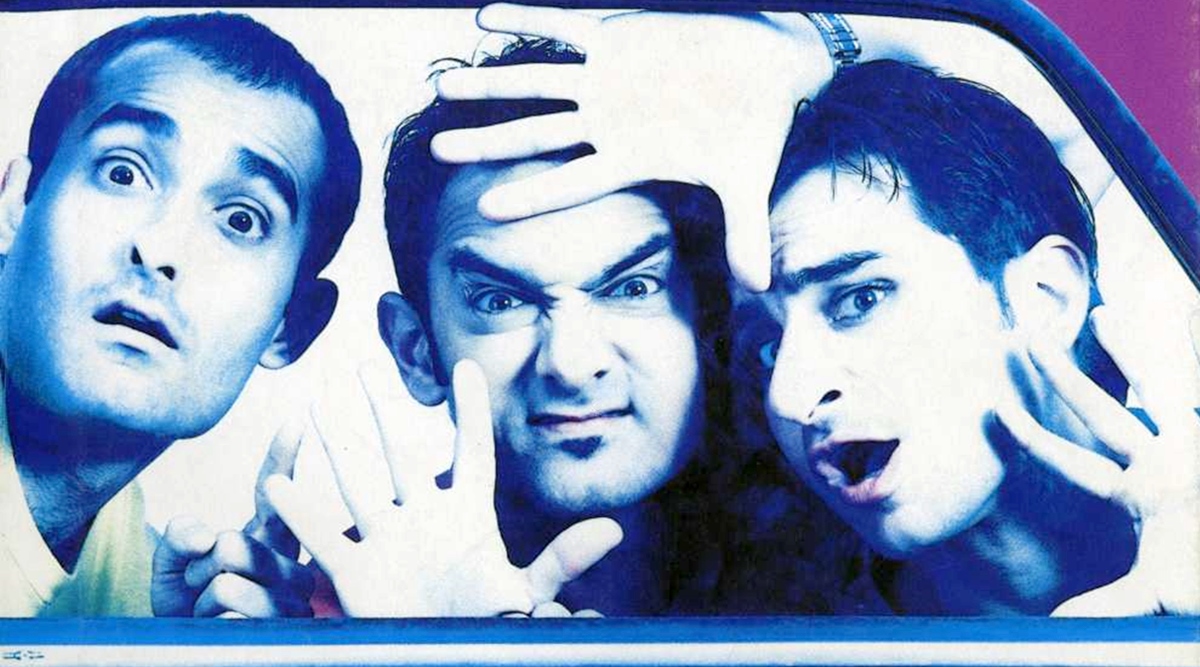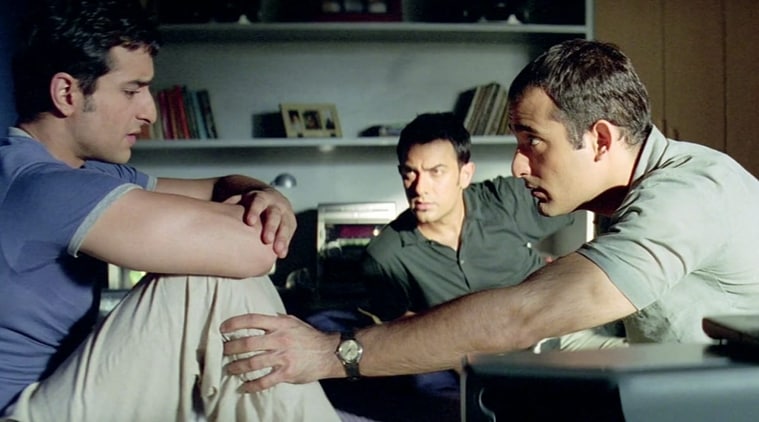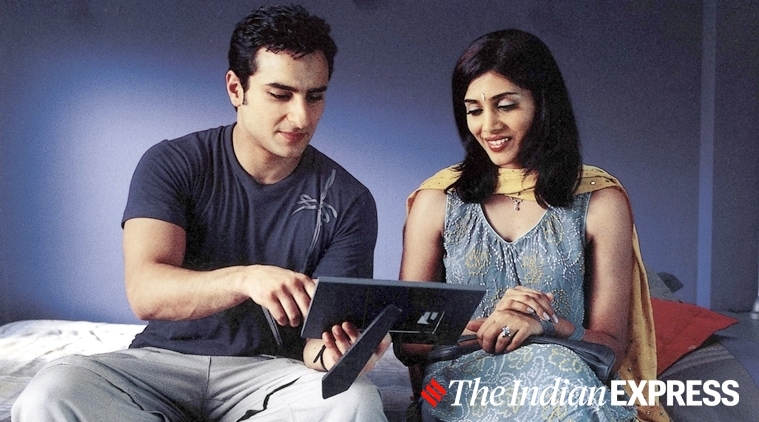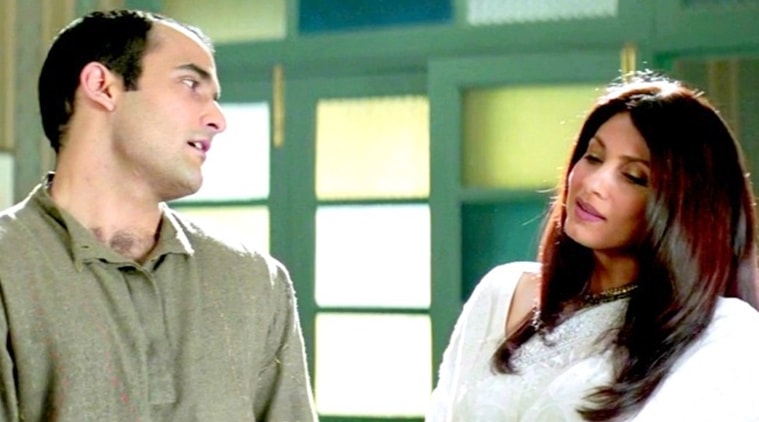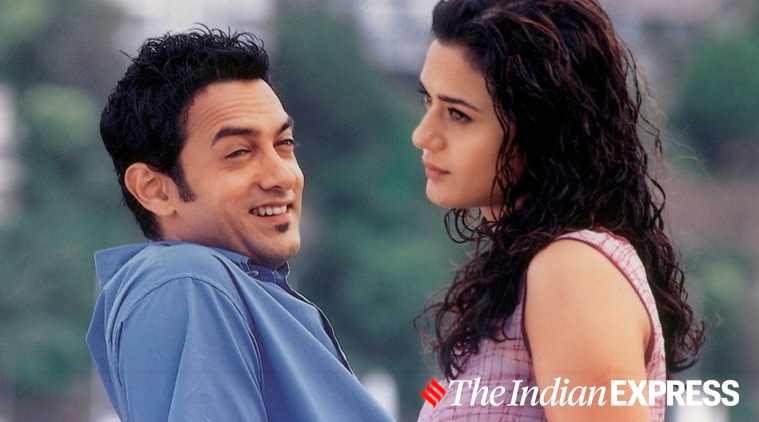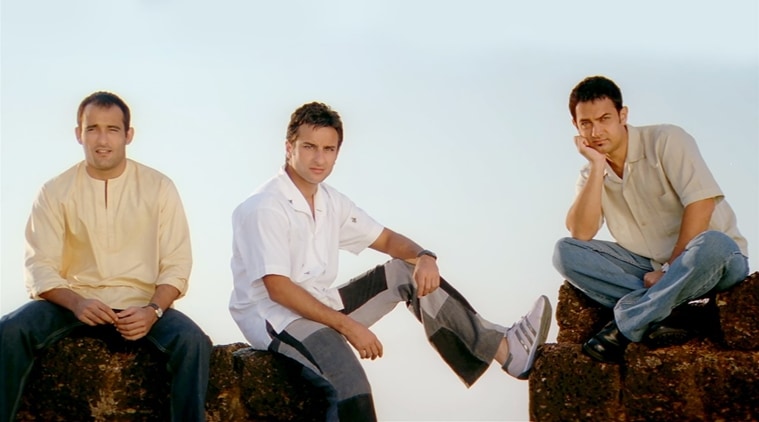As Farhan Akhtar-directed Dil Chahta Hai turns 20 today, we take a look back at how the Aamir Khan-Saif Ali Khan-Akshaye Khanna-Preity Zinta film became a gateway to new-age cinema in Bollywood.
In a world of Sholay and Dosti, of Jai-Veeru and two-hero films, Dil Chahta Hai turned the tables towards something unexpected and extraordinary. A coming-of-age story of three college friends out to explore the world, how their journey ahead changes their personal dynamics, redefines love and leads to self-discovery. From the outside, it might seem like your regular bromance, but the film peels through the layers, things we never hitherto risked to project onscreen. Today, in the list of classics, Dil Chahta Hai stands tall even after 20 years.
Looking back at his debut production, Ritesh Sidhwani told indianexpress.com, “When you talk about Dil Chahta Hai, each of its characters, be it Akash, Sameer or Sid, you relate to them because they are believable.”
In the truest sense, Dil Chahta Hai’s honesty has ensured it stands the test of time. We might have seen films about ‘dosti’, ‘yaarana’ et al before, Sholay (1975) being the benchmark, but a fresh take on the concept that reflected the mores of a post-liberalisation generation, was long overdue in 2001.
Dil Chahta Hai arrived at the start of a new decade, in fact a new millennium. This was after we’d lived through the 90s where heroes were cast in a mould, because the success formula was rarely altered. So either it was the romantic Raj Malhotra (DDLJ) or the new age angry young man Sunny Deol (Damini, Ghatak) or even the loud patriotism of Border or Sarfarosh. But what about youth representation? They were either the rebels or the nerds always made to hide behind their thick glasses.
The reality of Indian youth, the millennials was getting ignored by late 1990s. All filmmakers did was provide them with dreamy landscapes, an aspirational NRI lifestyle and a larger-than-life canvas that was far away from real challenges. Co-producer, writer and director Farhan Akhtar came to the rescue. He lifted instances from his personal life, cut it into three central characters played by Aamir Khan, Saif Ali Khan and Akshaye Khanna and pasted it in a screenplay that looked authentic.
“Because of all that’s happened in my life, I’ve always been very dependent on my friends. For me, that was nice to explore in a film and show it in a way that truly exists in the society, as opposed to the over-the-top dramatic “tu mera yaar hai…” It’s nice people identified with that,” Farhan once told NDTV.
https://youtube.com/watch?v=OBAcYSSUf6o%3Fversion%3D3%26%23038%3Brel%3D1%26%23038%3Bshowsearch%3D0%26%23038%3Bshowinfo%3D1%26%23038%3Biv_load_policy%3D1%26%23038%3Bfs%3D1%26%23038%3Bhl%3Den-US%26%23038%3Bautohide%3D2%26%23038%3Bwmode%3Dtransparent
The casting of Dil Chahta Hai played an integral part. I’d say half the battle was won there. Aamir Khan, who was already on board, convinced Saif too. This was when Saif was happily doing films like Yeh Dillagi and Main Khiladi Tu Anari. To pull him out of his ‘Ole Ole’ image and turn him into Sameer wasn’t easy.
In a previous interview with Mid Day, Saif shared, “I wasn’t sure about doing the film, because it was like a third lead. I told Aamir that I was playing hero in other films, and he asked which ones. I mentioned them and he said DCH is three times all those films put together. He called it good cinema and just said that I have to do it.”
Saif, who had a certain ‘look’ in his films took the biggest risk – of cutting his long hair, short. In fact the entire cast got their looks redesigned with hairdos playing a crucial part. Farhan’s then wife and celebrity hairstylist Adhuna Bhabani did the needful.
“The way it was written, the behind-the-scenes, the clothes, the haircut with gel… People said that’s dangerous because you’re going to look like a dude from Bandra. Also, there was a very superstitious culture at that time, people said if something is working, don’t change it, not even the role, just keep doing it!” Saif added.
Even after agreeing to play Sameer, Saif felt lost on the sets initially. While Aamir suggested him things he can try, it was former wife Amrita Singh who helped Saif find his confidence. “I came home and spoke to my ex-wife about it. She said why are you asking other actors about how to play your role? Then I thought I’m just going to do it my way. When it worked, it gave me confidence that I have a connection to what I think is the way to do things and what the audience likes.”
Saif’s famous phone call scene with girlfriend Priya still remains the actor’s best. He looks to be in absolute control of his Sameer. Akshaye Khanna agrees about his character Sid too. “I don’t analyse my work as such, but I love to hear when people talk about it. You bring a little bit of yourself to every character you do, there is no way of escaping that. I believe it is your body, your mind, your face attached to the character,” Akshaye Khanna told indianexpress.com.
https://youtube.com/watch?v=ctJI7pCbxAo%3Fversion%3D3%26%23038%3Brel%3D1%26%23038%3Bshowsearch%3D0%26%23038%3Bshowinfo%3D1%26%23038%3Biv_load_policy%3D1%26%23038%3Bfs%3D1%26%23038%3Bhl%3Den-US%26%23038%3Bautohide%3D2%26%23038%3Bwmode%3Dtransparent
The film boasts of brilliant performances, as if it was a role play for the actors, as if they weren’t acting but just living their parts with camera rolling in one corner of the room.
The cast and crew was indulging in something they hadn’t done before, they risked it all. Ritesh said, “We found an opportunity to create content for an audience which was untapped.” Farhan reiterated, “I don’t know if you can plan something like this. You do the best that you possibly can, you have a great time making the film. I’m thankful people loved it.”
From Saif’s silver pants to Aamir’s leather trousers, from Preity Zinta’s wet curls to Suchitra Pillai’s tiny braids – Dil Chahta Hai’s song “Koi Kahe” was just one sample of how the film’s detailing towards the representation of its characters worked wonders – they turned into pieces of everything our youth was doing off screen, even if it didn’t stick to your regular Bollywood norm.
Suchitra, who had a small yet prominent role of Sameer’s nagging girlfriend Priya shared with indianexpress.com, “That time I was with Channel V, being that bubbly VJ. I’m grateful that Excel took me out of that slot. Today, even my 13-year-old daughter and her friends are watching DCH. It changed the face of Bollywood.”
Despite a small screen time, Priya was a well defined role, a specimen of how brilliantly every character was structured. Suchitra Pillai too credited the writing and realness to Dil Chahta Hai’s success. According to her, Farhan managed to show different levels of romance and how the youngsters deal with it. “It showed the whole gamut of romantic relationships. Anybody can relate to the friendships too. And the language used was just so today. Dil Chahta Hai was not trying to be anything else. It was just very, very real, and very down to exactly what happened to our generation.”
So be it Akash’s realisation about being in love, to Sameer’s bickering about his experiences with girls and him ultimately falling into an arranged marriage setup, to Sid’s unspoken connection with an older woman, Dil Chahta Hai dared to show us the mirror.
And the Goa trip with its iconic shot at the Chapora Fort (now also called the Dil Chahta Hai Fort by travellers) that made to the film’s posters too, added colour to its pallete. Akash, Sameer and Sid were each other’s best friends and enemies too (Akash creating trouble in Sameer and Priya’s paradise), how their friendship falls apart only for them to reunite, formed trigger points in the well crafted plot.
Dil Chahta Hai came just two months after Aamir Khan’s other cult film, Lagaan in the same year. From a dhoti-clad village guy in Lagaan to an uber cool urban youth in DCH, Aamir’s transition was praiseworthy. According to Saif, “There were people like Aamir Khan and Farhan Akhtar who were affecting change in the industry. I benefited from it because it suited me what was being suggested.”
Farhan had once revealed that he was told not to direct Dil Chahta Hai. In an interview to LatestLy, the filmmaker-actor said, “During the casting round of DCH, an actor told me ‘I love the script, but I don’t know if you can direct it. So, why don’t you just give me the script and let me produce and make it myself.’ I dug my heels and said there’s no chance.” Thank you Farhan for not giving away the script.
What is Dil Chahta Hai without Farhan Akhtar’s vision? “He was just 26. That’s commendable for anyone to direct all the stars in such a big budget movie which became a game changer in Bollywood, and continues to be,” Suchitra looked back.
Dil Chahta Hai initially had some pace issue in its second half. Post some screenings for the family and close friends of Farhan and Ritesh, they decided to make it crisp post interval. “I remember there were few scenes which we removed after first couple of screenings. There was a scene between Akshaye and Saif which was cut, a scene with Akshaye and Dimple which was removed, then one with Aamir and Preity too. Our family felt the length was bit long in the second half,” Farhan said while speaking to NDTV.
For many, Dil Chahta Hai catered to only the elite with a very western-style packaging. But if looked closely, it still managed to keep the staple Bollywood romanticism and passion intact. And with Shankar-Ehsaan-Loy’s new age music, its tunes continue to reverberate through dance floors and our late-night playlists. From the zestful “Koi Kahe” to dreamy romantic ballet “Kaisi Hai”, from love banter of “Jaane Kyun” to retro-Bollywood-ish “Woh Ladki Hai Kahan” and the melancholy of “Tanhayee”, it was a complete album.
Post Dil Chahta Hai, India opened up to the idea of buddy dramas, paving way for the likes of Zindagi Na Milegi Dobara, Yeh Jawaani Hai Deewani, 3 Idiots, Kai Po Che, Jaane Tu Ya Jaane Na, Veere Di Wedding and more, because the dreams, aspirations and struggles of the young generation will live across eras, even if presented differently.
Dil Chahta Hai gave us two young producers in Farhan Akhtar and Ritesh Sidhwani who entered Bollywood with an aim to entertainment, but changed the way we make films, forever.
“Yaa toh dosti gehri hai, yaa phir yeh photo 3D hai” – do you still connect with this?
Source: Read Full Article

